Blue Staffordshire Terrier: what does it look like and how to care for it?
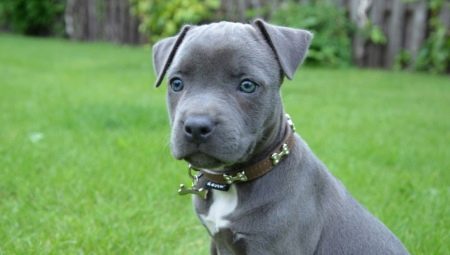
Large breed dogs are in great demand as service dogs and four-legged companions. Among the available number of large animals, it is worth highlighting the blue Staffordshire Terrier, which attracts attention with its unique exterior and character traits.
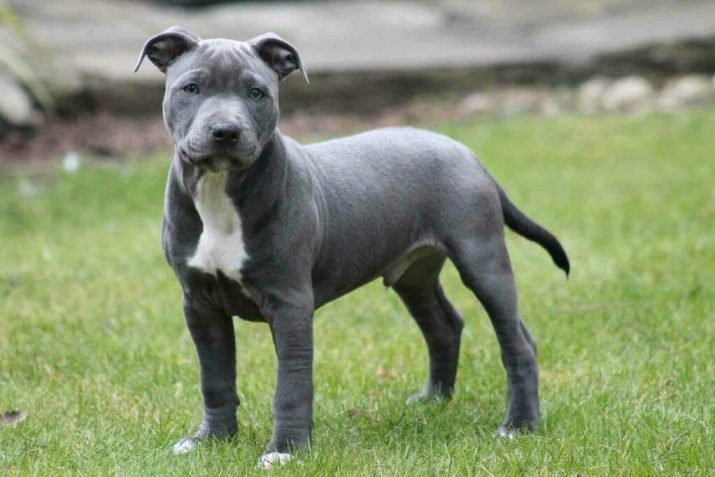
Origin story
The breed, which is now referred to as the Staffordshire Terrier or Amstaff, appeared in the 19th century. A dog with the exterior of a modern amstaff was the result of crossing two breeds no less famous at that time - bulldogs and game terriers. Initially, the American Staffordshire Terrier was called a little differently. The animals were called bull terriers or pit bull terriers, and only in 1972 one name was assigned to dogs, which is used to this day.
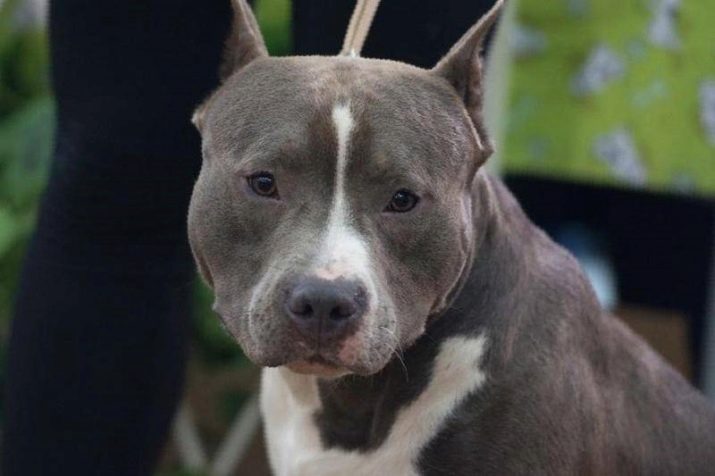
Work on consolidating the characteristics of amstaffs made it possible by 1835 to obtain an animal with a powerful head, light back of the body and innate activity. Dogs were originally used exclusively for participation in battles, but acquaintance with the pet made it possible to highlight in it good hunting inclinations, developed intelligence. So the Staffordshire Terriers began to be used by humans to perform various farm tasks, the animals were allowed to protect homes and other households.
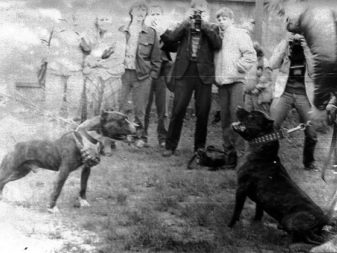
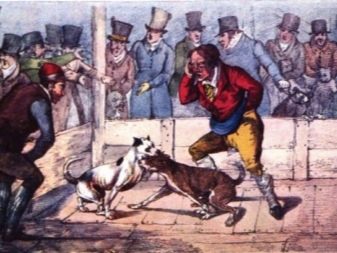
Later, man began to acquire large pets as a friend and companion.
The Blue Staffordshire Terrier, as well as other variations of the color of animals of this breed, are the result of the painstaking work of dog handlers, who set themselves the main task of breeding a dog whose aggressive character traits inherited from ancestors will be minimized.Modern representatives of the breed by their nature only vaguely resemble their fighting ancestors.
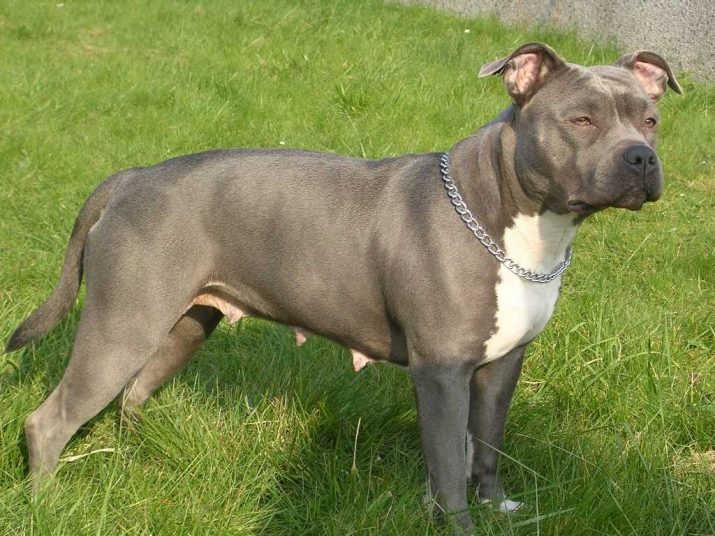
Description
According to the description, the American Staffordshire Terrier is an animal with a pronounced muscular corset, slightly stocky, but at the same time quite agile and elegant. The limbs of the dog are not distinguished by their size, in light of which they are harmoniously combined with the body.
The standard height for a blue amstaff is 46-48 centimeters for a dog and 43-45 centimeters for a bitch. Dogs weigh in the range of 20-30 kilograms.
The dog has a wide and deep skull, a muscular muzzle with a pronounced transition from the forehead, a rounded forehead. The jaws are strong, the lower one provides a secure grip. The lips are tight, tucked up, the nose is gray.
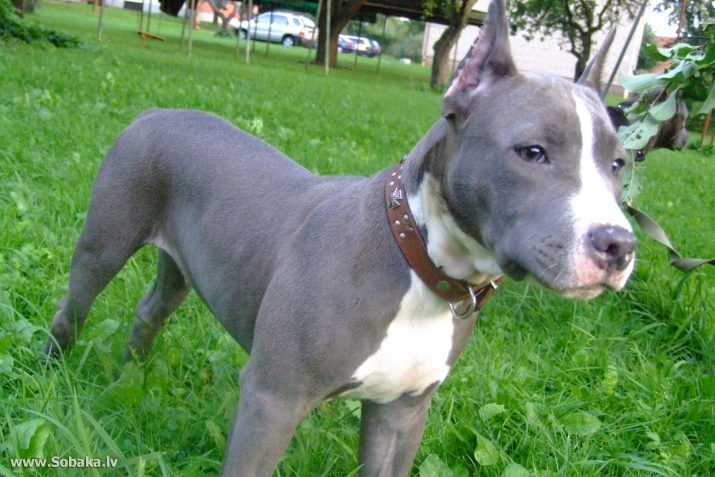
The auricles in purebred dogs are located in a standing position, it is allowed to cut their length depending on the personal preferences of the breeder. The eyes are large, set deep, and have the shape of a circle. The color of the pupils, according to the standards, should not be lighter than the shade of the amstaff woolen color.
The neck is powerful, closer to the shoulder joint it can taper slightly, there is a slight bend on it. The back is not too long, sloping from the shoulder to the body to the base of the tail. The line of the dog's abdomen is tight, the ribs are convex, the chest is deep.
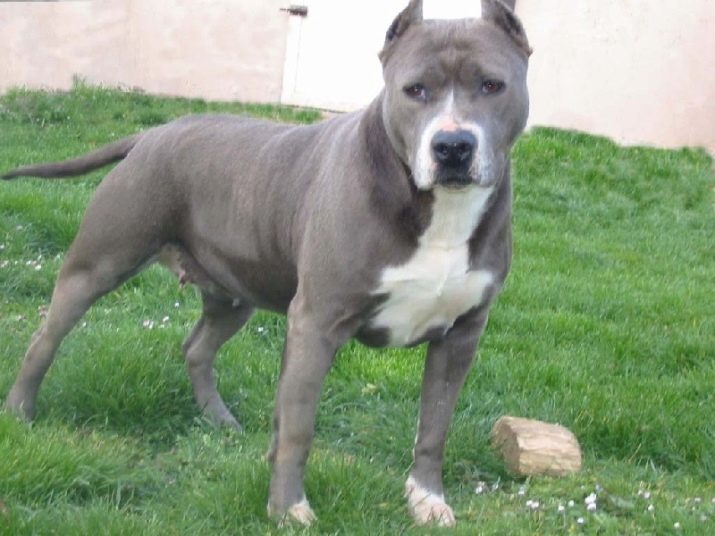
The limbs are set wide, straight; the muscles on the hind legs are clearly visualized. The coat is short and hard, the undercoat is minimally developed.
All varieties of gray, from dark to light, are considered acceptable color. The coat of the animal can have a blue or blue tint, there is a variation of the blue-fawn color of the animal. The color may not be uniform everywhere, you can see blue Staffordshire Terriers with light or even white spots located on the face, limbs or chest and abdomen.
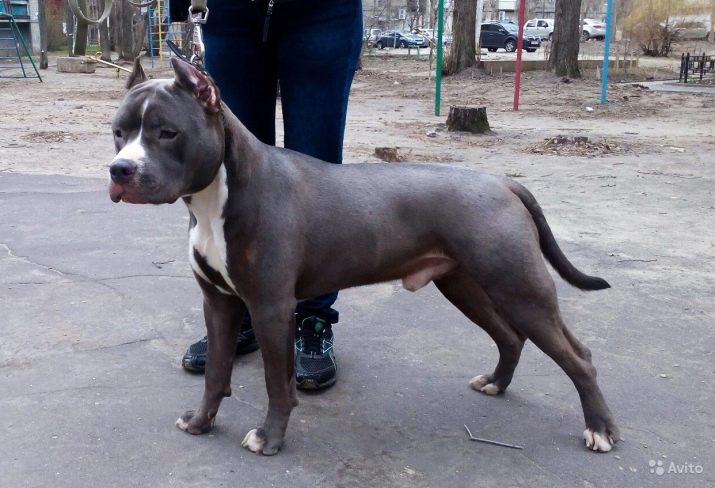
Due to its external attractiveness, this particular color variant of the breed is especially in demand for participation in exhibitions.
Character
Pets of the American breed, after careful selection work, differ significantly in disposition from their ancestors. Dogs are very kind, distinguished by developed intelligence, rather restrained. They are not characterized by sudden mood swings and unmotivated aggression. Among the fundamental character traits of the Blue Staffordshire Terrier are the following.
- Animals of this breed demonstrate ease and obedience in terms of learning and training. Since amstaffs are very smart, even as puppies, they quickly grasp the basic commands, and also learn what actions will be regarded by the owner as positive or negative.
- Amstaff is a cheerful and active animal that willingly takes part in various amusements, prefers long walks in the fresh air. With him you can go in for sports, jogging.
- Dogs are good-natured and sociable by nature. This trait manifests itself in relation to adult family members, as well as to children. Some animals will willingly play even with a stranger.
- The Blue Staffordshire Terrier has not lost its innate instincts, therefore it always protects its owner.
- Dogs are very sensitive to the mood of the breeder. Therefore, they will not bother, but they can simply be nearby if the person is not in the mood.
- Amstaffs are collective pets, with early socialization they will be able to get along with other dogs in the house. Some pets that grew up with cats do not have congenital aggression towards the representatives of the feline.


Features of the content
Despite the fact that the animal is quite large, it can easily be kept not only in a private house, but also in a city apartment. Dogs do not stand out for any specific nuances of content, however, sufficient activity of the four-legged family member will always be an important point.
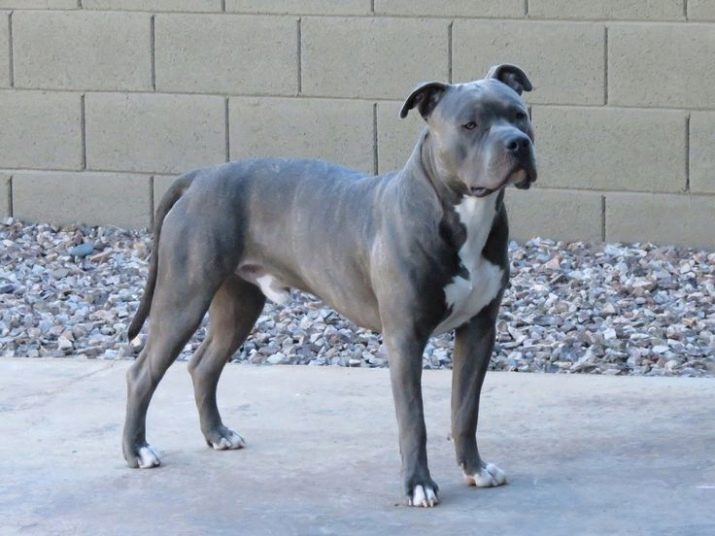
Therefore, long daily walks with a pet will become the basis for keeping the blue stuff. In the warm season, if there is a reservoir, bathing of the animal, playing in the water are welcome. As a rule, the average duration of walks is 1 hour. Amstaff can take part in agility or accompany the owner on a bike ride, jogging.

A feature of the breed is a short coat, which requires minimal care from the breeder. The dog will need to be brushed out from time to time with a metal brush. The pet does not need frequent bathing; you can replace water hygiene procedures wiping the animal's body with a damp cloth, towel. Such events will help remove dead fine lint and epidermis. Some Blue Staffordshire Terriers prefer cleaning with a household vacuum cleaner with a soft brush.


Dog hygiene should be taught from a very young age. The pet's nails will require attention from the breeder, which must be cut as they grow back.
The eyes and ears are cleaned as they become dirty; for this purpose, you can use a regular cotton swab dipped in water. The dog in the house should have its own place with a comfortable bed, it must be kept clean.
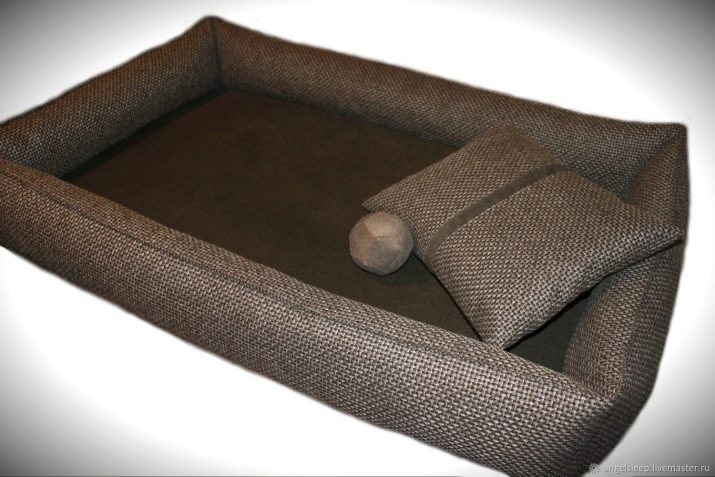
Training a dog of this breed does not require the involvement of a professional dog handler, pets very quickly memorize commands, do not show stubbornness and aggression during training. However, food rewards, as well as the lack of physical punishment, will come in handy.

How and what to feed?
There are two food options for the Blue Staffordshire Terrier:
- ready-made industrial feed;
- natural diet.
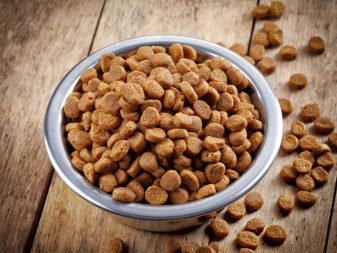
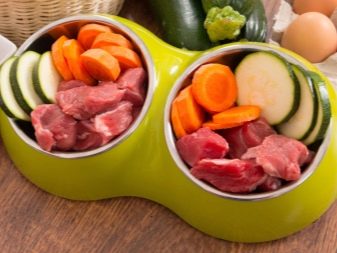
Each breeder chooses the most acceptable option for himself, based on personal preferences and financial capabilities. If the dog eats ready-made food, then the recommended class of food for a large pet will be premium. This requirement is due to the composition of such feeds, which takes into account all the needs for vitamins and microelements of an active four-legged friend.
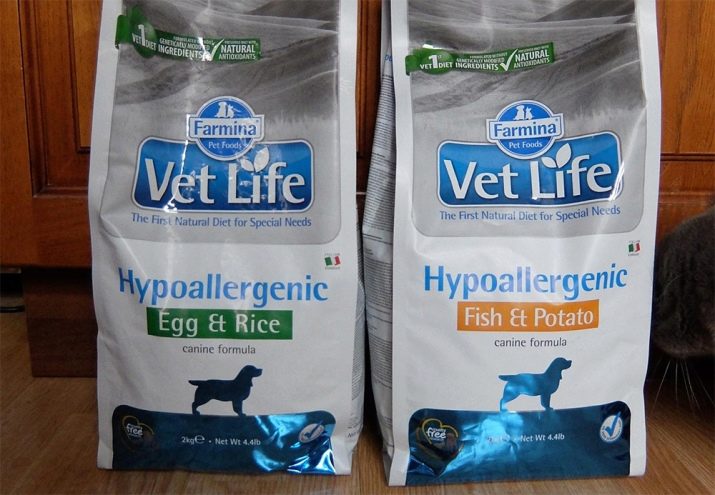
Natural food is also a good option for amstaff. However, in this case, the owner will have to independently plan the animal's diet so that it contains important foods. These include:
- meat products - beef, pork, poultry fillets, offal;
- large bones;
- eggs;
- boiled greens and vegetables;
- fruits;
- cereals;
- dairy and sour milk products.
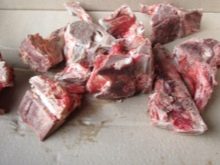
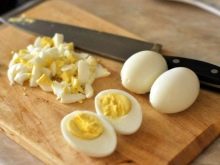

Bones are important for oral care, so a pet can be offered such a "delicacy" from time to time... But the tubular bones are in the category of prohibited options, since their fragments can seriously damage the internal organs of the dog.
It is recommended to combine a meat ration with boiled cereals. The priority is the alternation of pearl barley, rice and oat groats. Of the offal, it is worth focusing on the kidneys, heart, udder, spleen. It is better to give meat raw, and pre-boil vegetable food in the form of vegetables, remove the peel.
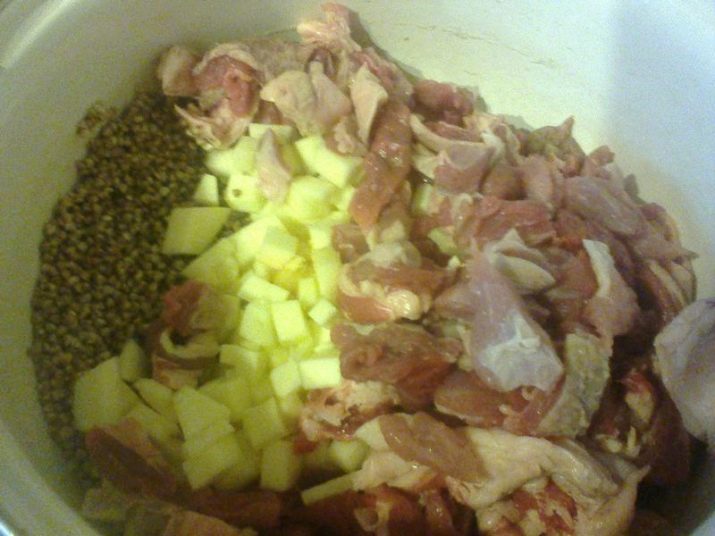
Also, do not forget about the dog's drinking regimen. The animal should always have access to fresh and clean water.
It is extremely important to monitor the diet of a young dog in the first months of life, since it is during this period that the animal will begin to build up the constitution, develop the organs of vision and scent. The diet should be structured in such a way that the dog eats at strictly defined hours. A schedule like this will help you avoid digestive problems and discipline your dog.
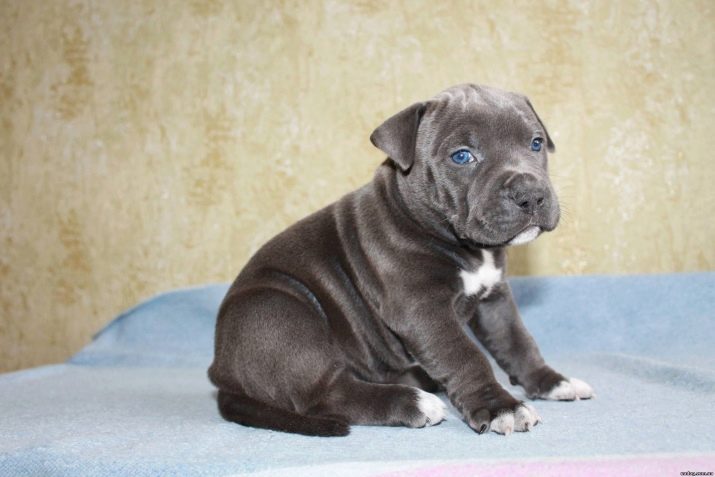
The following foods will be prohibited from eating the Blue Staffordshire Terrier:
- bakery products;
- salting;
- smoked meats;
- confectionery;
- various food additives and flavor enhancers.



For the characteristics of the breed, see the following video.






































